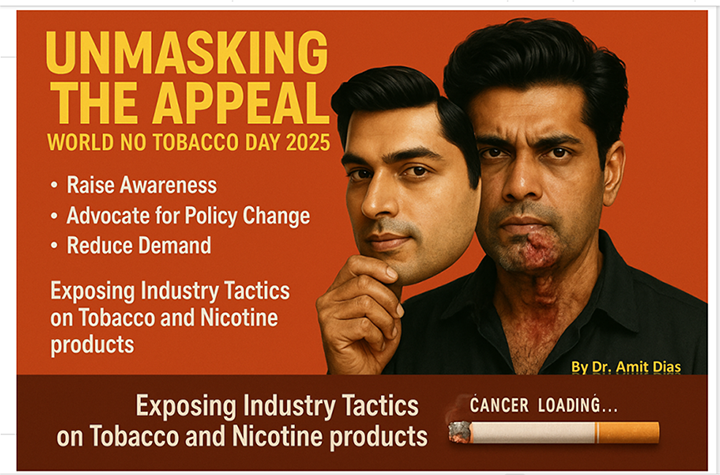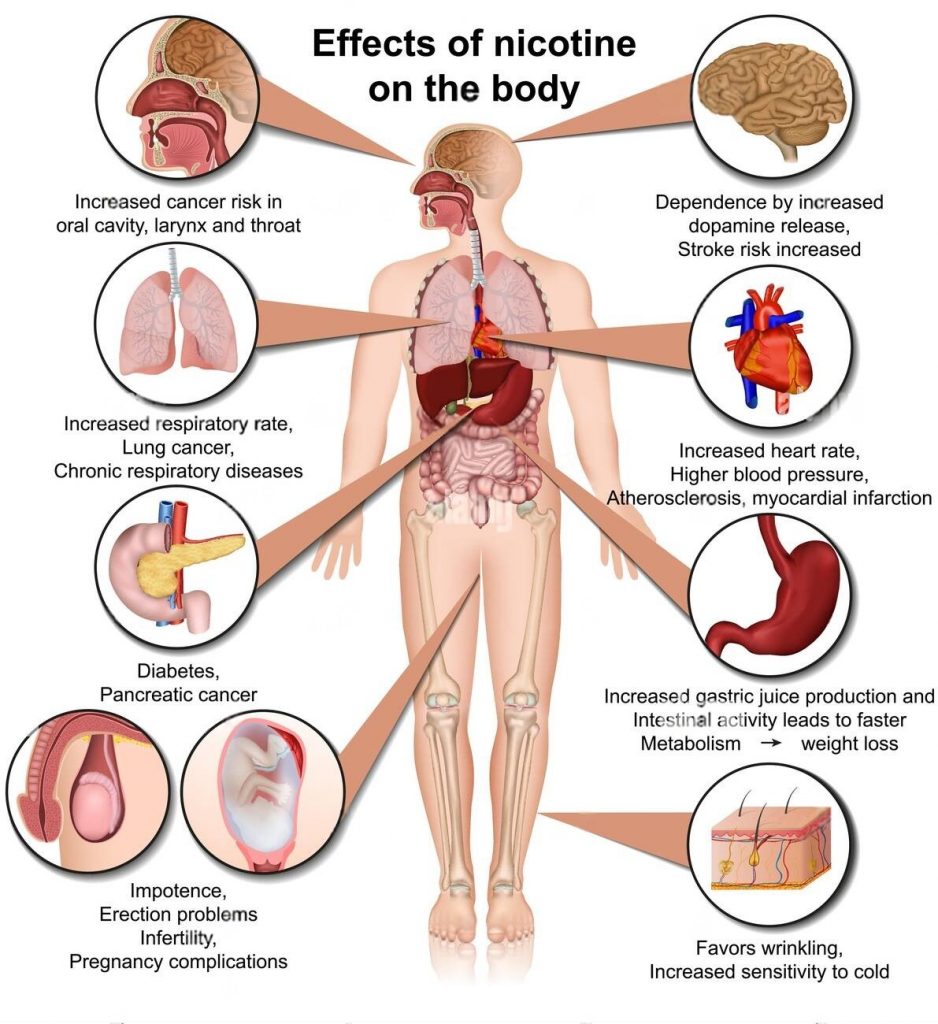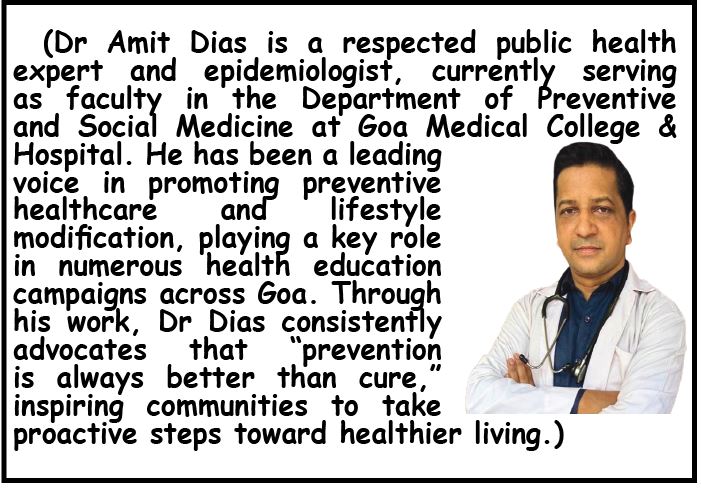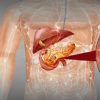Goa is abuzz with excitement as vintage bike and car owners, users, collectors and fans are decking […]

UNMASK… THE REAL FACE OF THE TOBACCO AND NICOTINE INDUSTRY!
May 31- June 06, 2025, MIND & BODY, HEART & SOUL May 30, 2025Q &A Interview with Dr Amit Dias, MD, on No Tobacco Day
May 31, 2025 is observed globally as “World No Tobacco Day” — a day dedicated to raising awareness about the dangers of tobacco use and advocating for effective policies to reduce consumption. This year’s theme, “Unmasking the Appeal,” highlights how the tobacco and nicotine industry continues to manipulate young minds through flashy marketing strategies, eye-catching packaging, flavored products, and targeted digital media campaigns.
We spoke to Dr Amit Dias, from the Department of Preventive and Social Medicine at Goa Medical College & Hospital, who explains,
“These industries mask the deadly nature of their products behind glitzy ads and misleading messages — making them appear ‘cool,’ harmless, or even falsely marketed as ‘healthier alternatives’ to cigarettes. It’s time to unmask the truth.”
This interview offers life-saving insights. Read on and share it widely—because knowledge saves lives.
Goan Observer: Doctor, Thanks for joining us on this important discussion, let’s start by understanding why we observe World No Tobacco Day?
Dr Amit Dias: World No Tobacco Day was initiated by the WHO in 1987 to raise awareness about the devastating health consequences of tobacco use and to advocate for strong tobacco control policies. Every year on May 31, the world unites to expose the tactics of the tobacco industry and promote efforts to reduce tobacco consumption and protect current and future generations. It’s one of the biggest risk factors for non communicable diseases and we need to ensure people are aware of it. Media should support health and wellness in a big way, have a major role to play and highlight the theme.
Q: What is the theme for WNTD 2025 and what does it mean?
A: The theme this year is “Unmasking the Appeal” and it’s incredibly relevant. The focus is on exposing how the tobacco and nicotine industry uses marketing strategies to make harmful products seem attractive—especially to youth. The rise in nicotine use among adolescents and young adults is alarming.
Companies use flavors, influencers, and deceptive packaging to promote these products as trendy or less harmful. But the truth is — whether it’s traditional smoking, vaping, or chewing tobacco — the harm is real.
Q: Why do you believe young people are being especially targeted?
A: It is business…. The young are their future market. According to WHO (2022), over 37 million youth aged 13–15 used some form of tobacco. In India, both smoked and smokeless tobacco forms like cigarettes, bidis, and gutka are widely used. The young fall for thrills and experimentation and are soft targets.
In Goa, it’s common to see school-going children experimenting with tobacco, often unaware of the long-term consequences. Flavored vapes and trendy e-cigarettes are marketed on social media, even when vaping is officially banned in India since 2019 under the Prohibition of E-cigarettes Act. I appreciate the efforts made by Dr Shekhar Salkar and NOTE and Peter Borges and team and the “Yes to Life campaign.”
Q: Why is tobacco so addictive?
A: Tobacco products contain nicotine, which is a highly addictive psychoactive substance. It stimulates the release of dopamine in the brain, giving users a temporary sense of pleasure or relief. But this effect is short-lived—and over time, the brain develops tolerance and cravings increase.
This leads to dependence and withdrawal symptoms like irritability, anxiety, poor concentration, and insomnia—making it very difficult to quit without help.
Q: What are some of the harmful effects of tobacco?
A: The list is long. Tobacco use is linked to:
Cancer (lungs, mouth, throat, bladder, pancreas, etc.)
Heart disease and stroke
Chronic Obstructive Pulmonary Disease (COPD)
Weakened immune system
Erectile dysfunction, infertility, and complications in pregnancy
Second-hand and third-hand smoke exposure harms even non-smokers
In total, tobacco kills over 8 million people globally every year, including 1.3 million non-smokers exposed to second-hand smoke. It’s not just a habit—it’s a global epidemic.
Q: That is alarming indeed, what other diseases are linked to tobacco?
A: Beyond cancer and lung diseases, tobacco is a major risk factor for a number of other diseases such as…
Dementia and Alzheimer’s disease — this is something that I publicized:
Peripheral artery disease
Type 2 diabetes
Eye diseases like macular degeneration
Weakened bone health and early menopause in women

Q: Is vaping really safer than smoking?
A: No, vaping is not safe. It is often falsely marketed as a “healthier alternative.” E-cigarette liquids may contain nicotine, heavy metals (like lead), volatile organic compounds, and carcinogens.
Young people are lured by flavors like bubblegum, mango or mint. But we must understand: these are nicotine delivery devices, and the user is still exposed to addiction and long-term harm.
India banned e-cigarettes and all forms of Electronic Nicotine Delivery Systems (ENDS) in 2019 due to rising concerns over youth addiction and health risks.
Q: How many harmful chemicals are in cigarettes?
A: Over 7,000 chemicals, out of which at least 250 are harmful, and 70 are known carcinogens. Some notable toxins include:
Formaldehyde (used to preserve dead bodies)
Arsenic (rat poison)
Benzene (used in gasoline)
Ammonia (cleaning fluid)
Tar (sticks to lungs and reduces function)
Cigarette smoke damages almost every organ in the body.
Q: How can people quit tobacco successfully?
A: It’s tough, but not impossible. First, you need motivation, then support. Here’s how: Consult a doctor or visit a Tobacco Cessation Clinic (available in District Hospital and the GMC in Goa)
Use WHO-approved Nicotine Replacement Therapy (NRT) or medications
Join support groups or call national quit line numbers
Create a quit plan, stay active, and build healthier routines
Most importantly, don’t wait for a health scare to quit. Quitting improves health almost immediately — from better breathing to reduced cancer risk over time.
Q: What is your final message for our readers?
A: This World No Tobacco Day, let us unmask the deceptive tactics of the tobacco and nicotine industry. We must protect our youth, push for stronger policies, and empower individuals to say No.
















